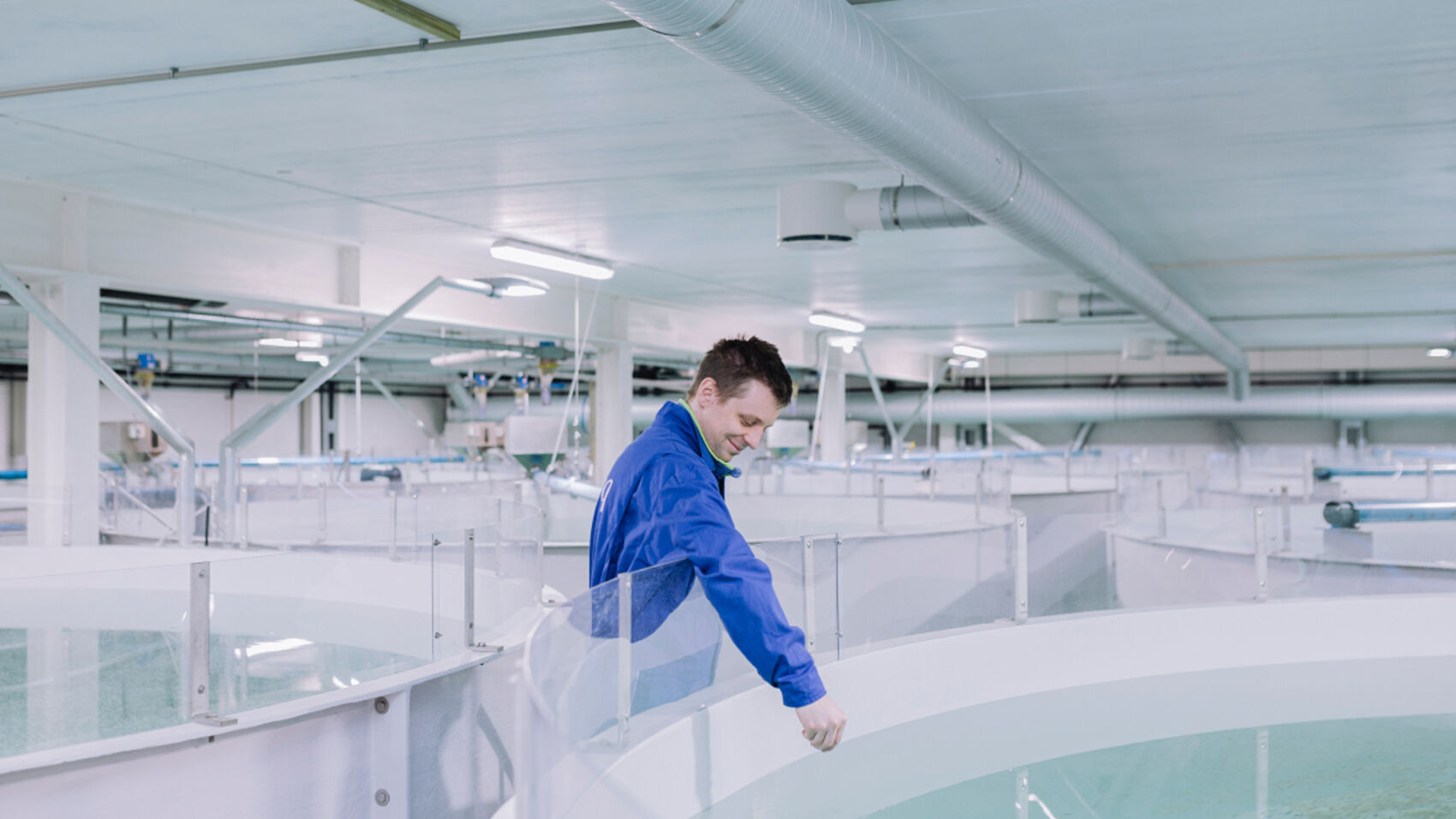Sea the solution / The Food Challenge
There are different factors that can stress salmon. According to R&D manager of Fish Health, Henrik Duesund, these challenges also represent opportunities to improve.
“Cermaq ´s concern about fish welfare spans from each employee caring for the fish at every hatchery and fish farm to Cermaq’s priorities for research and technology development”
–Henrik Duesund, R&D manager of Fish Health,
"This is all based on a deep recognition of how gaps in fish health and welfare impact on environmental and financial results,” Duesund says.
As early as 1965, the five freedoms from stressors that all farmed animals should enjoy were developed and later adopted by the World Organisation for Animal Health (OIE). Cermaq has made a welfare policy based on these principles.
The five freedoms
- Freedom from Hunger and Thirst
- Freedom from Discomfort
- Freedom from Pain, Injury or Disease
- Freedom to Express Normal Behaviour
- Freedom from Fear and Distress
Copying natural conditions
While farmed salmon don´t have the same life as wild salmon, the production cycle aims to emulate natural conditions, all the while complying with these five freedoms.
“The survival rate for farmed salmon is tremendously high compared to nature. Which is nothing less than what should be expected. In nature survival rate is around 5 %, in our farming the annual survival rate is 95%. Our goal is to increase that survival rate,” Duesund says.
“The survival rate for farmed salmon is tremendously high compared to nature. Which is nothing less than what should be expected.”
–Henrik Duesund, R&D manager fish health
Farmed salmon have a predictable diet compared to wild salmon. There is no need for hunting fish and insects, and the fish get a science-based feed with all necessary nutrients, and they do not have to fight over the food. While ocean-farmed salmon have much room in a pen, the room is still limited by a net,” Duesund says.
Natural versus chronic stress
Disturbances and other factors can cause stress in fish.
“Stress is natural and an important physiological function, and some stress is positive. However, permanent high-level stress changes the picture. Chronic stress over time will affect the basic physiological processes in the salmon which can lead to the fish being more receptive to pathogens that cause disease,” Duesund says.
“Stress is natural and an important physiological function, and some stress is positive. However, permanent high-level stress changes the picture.”
–Henrik Duesund

Careful handling of the fish
According to Cermaq, a good start to life is crucial for the salmon, as accumulated stress in fry and smolts reduces the fish's ability to adapt to a good life in the sea.
The smolt must therefore have optimal conditions, such as good water quality, in their first phase in fresh water. “We must also ensure homogeneous smoltification and minimise the number of handlings in the hatchery phase,” Duesund says.
Improvement at every step
Preventative sea-lice management is very important for all salmon farmers – and an important way to reduce the need for treatment and thus stress. Optimised feed and deep-water feeding, an understanding of sea-lice biology, and intricate knowledge of farming sites are other important factors.
“Preventative sea-lice management is very important for all salmon farmers – and an important way to reduce the need for treatment and thus stress.”
–Henrik Duesund, R&D manager fish health
New technology enabling individual farming through technology such as iFarm, which Cermaq is developing, can be an important way of reducing sea-lice levels and handling by sorting out any diseased fish using sensors.
That way all the other fish in the pen are left undisturbed. Technology separating the salmon from the ocean outside, such as Cermaq’s closed systems (SCCS and Certus) also reduce these stress factors. However, it is important to ensure that new technologies do not introduce other stressors.
“Robust smolts are key to ensuring that the salmon can thrive in seawater. This starts with freshwater production. Based on research and testing, changes have been made for example in diameter and bending of pipes. Avoiding stressful situations for the fish is the basis of Cermaq’s research and operations,” Duesund says.